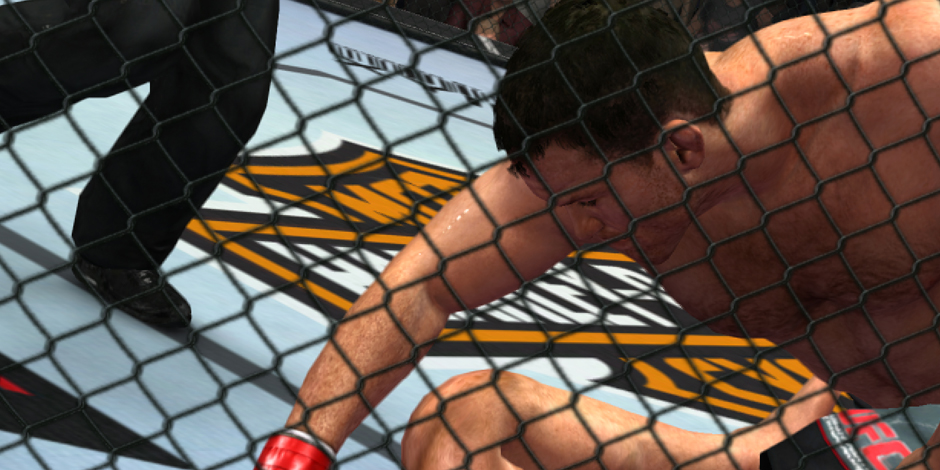GamesRadar+ Verdict
Pros
- +
Pride mode is spectacular
- +
The new submission system
- +
General fixes make it the best UFC game yet
Cons
- -
Pride should be better integrated
- -
Load times are rough
- -
Career mode's new presentation
Why you can trust GamesRadar+

There's something about MMA games that makes them easier to wrap our heads around than games like Street Fighter. Don't get us wrong, we love shooting fireballs and doing triple-flips as much as the next journalists, but it's just more relatable to watch about two fighters punch and kick until one falls down and doesn't get back up. It's because of that – and because of our love for MMA – that we're drawn to UFC Undisputed, which has done a fantastic job over the years of converting the fast-paced UFC action into videogame form. After THQ tried to force the game into a yearly release with mediocre results in 2010 we were excited to get our hands on this new version, which was given a little more time to bake before release.
UFC Undisputed 2010 had a lot of small problems and one big problem. The small problems reared their head in every element of the game. Flash knockouts were too frequent, fights rarely made it out of the first round, the ground game was overly complicated, the career mode had a bunch of statistical problems, there wasn't any proper support for truly competitive play, there were... well, yeah, we'll just say there were lots of little issues. With the extra time between games, developer Yuke's was able to address almost every issue, making for a much smoother experience.
Above: Jon Bones Jones has terrifying elbows
Fights last longer than they did before, and when they do end, they're usually not with a fighter collapsing and the other fighter standing still. Fighters are allowed to continue attacking their incapacitated comrades after they fall, which better replicates the "finish the fight" mentality of the actual sport. There's also a simplified control setting for grappling and ground play that makes it much easier to jump in without learning about different stick rotations. There's still a benefit to learning the full controls, as they offer more freedom, but it's nice to be able to play without watching a complex tutorial. Competitive play is supported better thanks to the ability to turn on a mode that equalizes stats and removes some of the randomness from the game, and there's even a "realistic" setting for exhaustion, which makes the matches play more like real UFC fights.
It really feels like Yuke's went down the list and checked off every major concern from fans of the series. It's impressive, and really shows when you start to fight and begin noticing all of the little changes. It's just cleaner, more robust, and all-around better.

Above: The models are nearly perfect recreations of the athletes
The career mode has also been overhauled, too, though we're sort of conflicted as to whether or not we're happy about the changes. Some are undoubtedly for the better – training is easier and more enjoyable, with new mini-games replacing the old training modes, and the actual system of improving stats, leveling up skills, and learning new abilities is much, much better. The most unpopular aspect of 2010's was likely the stat degradation system, which aimed for an authentic, realistic feel by having attributes fade over time unless they were constantly trained. It's gone now. Cut completely in favor of a more enjoyable, streamlined career where stats go up, without ever falling back down.
But there's a trade-off: the last game's cinematic moments, showing our created fighter's rise through the ranks with occasional cutscenes and post-fight interview dialog options, have been stripped out entirely. Instead, there are interviews with fighters during key moments of our career, with actual UFC athletes talking about their first wins, losses, title shots, and such as we reach those benchmarks. We like the videos, but it leads to a conflicted experience. Are we fighting in a UFC career where we're being immersed into the sport, or are we being inundated with the brand instead? We miss CGI Dana White inviting us to join the UFC, and we missed being able to create a personality with our fighter.

Above: Flipping tires gives stats, which doesn't make sense, but at least it's fun
These were elements we were desperately hoping would be expanded in the sequel, not removed entirely. Still, it's an improved experience, technically, and adds to the long list of general improvements made to the game.
The largest problem with Undisputed 2010, however, was the submission system. Submissions were completed and defended by spinning the right analog stick. The maneuver, called "the shine" by the developers, required no technical knowledge, and simply wasn't very fun. We'd be fighting a fun fight, using all we've learned about the game to do battle with our opponent, and then all of a sudden we were spinning the right stick like we'd stumbled into a game of Mario Party. It was an absolute blister-causing mess. The new system is still a bit unwieldy at first, but it's undoubtedly much better. Now, starting a submission throws an octagon on the screen, with the initiating player being given an icon that goes on the outside of the octagon, and the defending players being given a bar on the inside. In order to submit a fighter, the bar on the outside needs to cover the bar on the inside for long enough to fill a meter up, and the fighters can chase their opponent's bars around the shape flat octagon.
Above: See the submission system in action
The size of the bars is dependent on a number of factors, such as the fighter's stamina, their submission skills, and the amount of damage they've taken to the body part being submitted. It's less frustrating and random than spinning the analog stick, and the fact that the bar size is dependent on the fight makes it feel like a more integrated part of the game, even if the actual art and design itself is somewhat obtrusive, feeling removed from the rest of the game.
More info
| Genre | Fighting |
| Description | PRIDE Mode and an expanded submission system headline the 2012 iteration of THQ's UFC series. |
| Franchise name | UFC |
| Platform | "Xbox 360","PS3" |
| US censor rating | "Rating Pending","Rating Pending" |
| UK censor rating | "Rating Pending","Rating Pending" |
Hollander Cooper was the Lead Features Editor of GamesRadar+ between 2011 and 2014. After that lengthy stint managing GR's editorial calendar he moved behind the curtain and into the video game industry itself, working as social media manager for EA and as a communications lead at Riot Games. Hollander is currently stationed at Apple as an organic social lead for the App Store and Apple Arcade.




